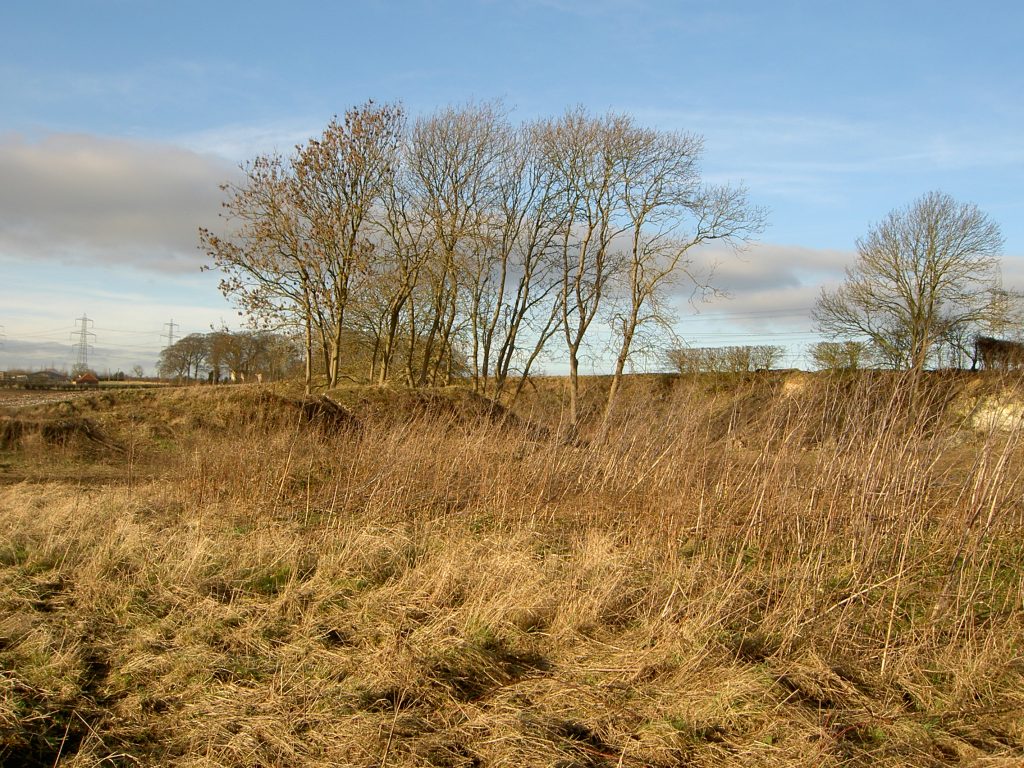
Field quarries is a term used to describe usually fairly shallow diggings into the surface of fields overlying chalk bedrock, this usually done by the farmer and his/her workers. As with parish quarries the chalk quarried might have been used as hard-core but it was also broken down (crushed) and spread as lime on fields, or parts of fields, where the soil was acidic. Field quarries were once common on the Wolds but most now have been infilled and top-soiled over so they are hardly perceptable in the landscape today. Although I haven’t travelled the route for a few years, either side of the main road between Beverley and Market Weighton it was possible to see a number of field quarries in various states of disuse. The picture above shows a disused field quarry on the south bank beside the junction of the old Brigg Road from Barton with the minor road to Saxby All Saints. It, and indeed all ex-chalk quarries, become a mini nature reserve if left to Nature to re-colonise.
Usually the largest chalk quarries seen today, whether still worked or disused, were/are commercial ventures. Until recently there were two large-scale examples, the huge quarry above South Ferriby and the one above Melton. However, the former is now mothballed as is the Humber bank cement works to which the chalk was transported by conveyor belt – the large rock-grabbing machines, the crushing plant and the dumper-trucks used to carry the chalk lumps across the quarry-floor all now stand silent. The large commercial chalk quarry at Melton Ross near Humberside Airport is still in production. Large, once commercial, chalk quarries but now disused exist on both banks of the Humber Estuary. The easiest to explore now forms part of the Humber Bridge Country Park (where the large car-park is currently being used as a Covid testing centre) immediately west of Hessle (s.p.b.s., ‘Little Switzerland’).
(to be continued)